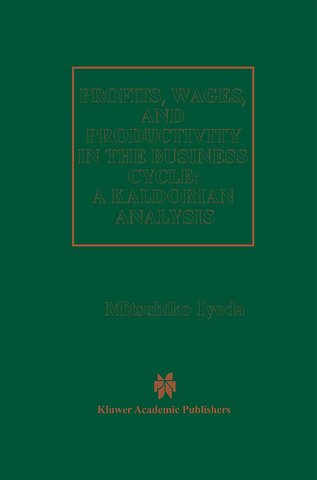Profits, Wages and Productivity in the Business Cycle
A Kaldorian Analysis
Paperback Engels 2012 9789401062602Samenvatting
This book attempts to explain the changes in specifiC macroeconomic vari ables-such as the relative share oflabor, the profIt rate, and the real wage rate in advanced capitalist economies-in relation to the influence of the business cycle in income distribution. In the pursuit of this inquiry, I fIrSt establish some stylized facts that I wish to investigate. The three countries discussed here-the United Kingdom, the United States, and Japan-are observed over a period of twenty-two years beginning in 1970, which covers at least three business cycles. This study makes several assumptions. First, there is no common feature on whether labor share moves countercyclically or procyclically; however, labor share increases in the fIrst year of contraction and decreases in the fIrst year of expansion, though there are some exceptions. Second, the profIt rate moves pro cyclically . Third, labor productivity moves pro cyclically and shows a symmetrical change; productivity sharply increases in the fIrSt year of expansion in terms of the growth rate and decreases in the fIrst year of con traction. Fourth, the real wage rate has no common feature. Finally, labor shares with and without "labor income of self-employment" imputed from self-employment income are almost parallel (except for Japan), and their move ments are also similar, though they move differently for some years. To explain these facts, I examine three types of model (or theory)-Kaldorian theory, real-business-cycle theory, and new Keynesian theory-but the focus is on Kaldor's approach-hence, the book's subtitle, A Kaldorian Analysis.
Lezersrecensies
Inhoudsopgave
Anderen die dit kochten, kochten ook
Rubrieken
- advisering
- algemeen management
- coaching en trainen
- communicatie en media
- economie
- financieel management
- inkoop en logistiek
- internet en social media
- it-management / ict
- juridisch
- leiderschap
- marketing
- mens en maatschappij
- non-profit
- ondernemen
- organisatiekunde
- personal finance
- personeelsmanagement
- persoonlijke effectiviteit
- projectmanagement
- psychologie
- reclame en verkoop
- strategisch management
- verandermanagement
- werk en loopbaan






